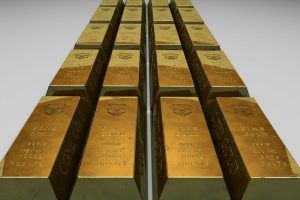Central Banks Buy 55 Tonnes of Gold in June
Posted onIn 2022, central banks purchased a staggering amount of $70 billion in gold, the most since 1950, as governments around the globe clamored to add more precious metals to their coffers. This year, the gold buying hasn’t let up.
The world’s global central banks—led by the People’s Bank of China—were back in the market to buy gold in June, adding a total of 55 tonnes of the precious metal to their vaults.
Overall, in the first half of 2023, central bank gold buying was widespread among both developed and emerging market nations and hit a first-half record at 387 tonnes, according to the World Gold Council.
What exactly are Central Banks?
Central banks are government institutions that are charged with managing the money supply of their respective countries and controlling monetary policy, like official interest rate levels. In most countries, they are tasked to manage price stability (inflation), while in other countries, like the United States, they are also required by law to support full employment. Examples of central banks include the European Central Bank (ECB), the Bank of Japan (BOJ), the People’s Bank of China, and, of course, the U.S. Federal Reserve.
Why do Central Banks Buy Gold?
Central banks buy the world’s most trusted “safe haven” investment for the same reason that individual investors, family offices, pension funds, and mutual funds buy gold.
The reasons include diversification, a hedge against inflation, and a store of value. Gold retains its value no matter if paper currencies rise or fall in value.
Notably, central banks are also purchasing gold now in an attempt to diversify away from the U.S. dollar—as gold can be swapped into any currency around the world, like the European euro, Chinese yuan, Japanese yen, or even the New Zealand dollar or Swiss franc.
Increasing Geopolitical Tensions
China has been leading the pack in purchasing gold in recent months. From December through May, the People’s Bank of China purchased 2,076 tonnes of gold, alongside a number of other central banks who were buying including Turkey, India, and Singapore. China in particular has been seeking to wean its country off the U.S. dollar amid rising political tensions with Washington D.C. policymakers.
The Bank of Russia has also accumulated gold over the past year, with its bullion purchases up 1 million ounces as of March, to a total of 74.9 million ounces. Russia leaned into its gold purchases in an attempt to avoid Western sanctions related to its war in Ukraine.
Gold Outlook
In a recent research note, JP Morgan projects the price of gold will average around $2,175 an ounce by the fourth quarter of 2024.
That marks a 15% increase from the current gold price.
“We’re in a very prime place where we think gold ownership and long allocation to gold and silver is something that acts as both a late cycle diversifier and something that will perform as we look to the next sort of 12, 18 months.”
The firm also pointed to continued central bank buying as a hedge against geopolitical risk and to diversify away from the dollar as a factor boosting the price of gold in the months ahead.
In fact, 24% of central banks plan to add more gold to their reserves in the next 12 months, according to the 2023 Central Bank Gold Reserve Survey released by the World Gold Council,
An argument could be made that the world’s global central bankers are some of the savviest, smartest investors around. If they plan to buy more gold, it begs the question, should you consider buying more too?
Want to read more? Subscribe to the Blanchard Newsletter and get our tales from the vault, our favorite stories from around the world, and the latest tangible assets news delivered to your inbox weekly.







